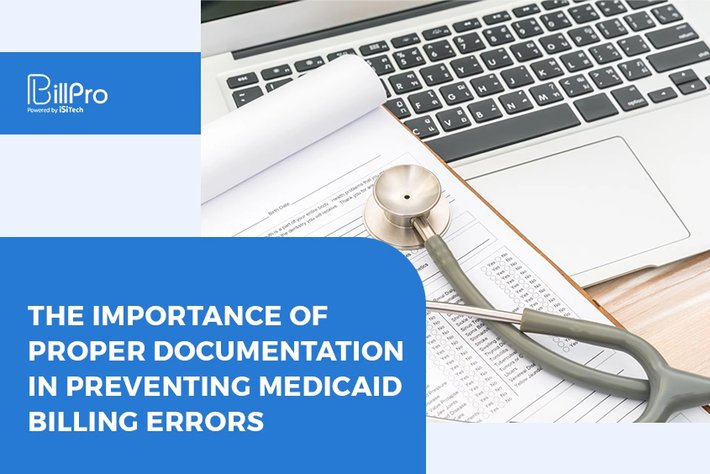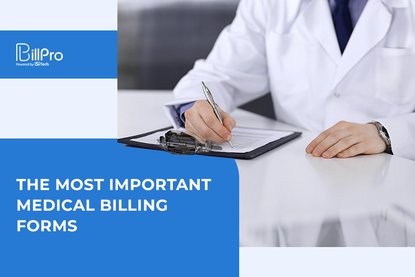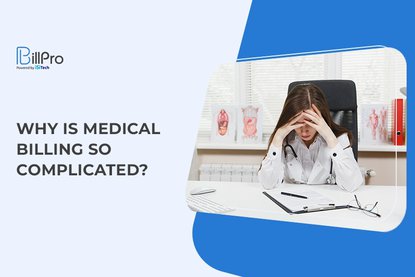Proper documentation in healthcare is critical. Errors can lead to misunderstandings, billing errors, and even potentially dangerous medical consequences.
To ensure proper documentation with minimal to zero mistakes, you need reliable software that makes data reporting and recording easy. And when mistakes happen, the system should ensure corrections are also easy to make.
Medicaid Documentation for Billing Purposes
Medicaid is a government program that provides health coverage to millions of low-income Americans. The program is administered by every state but is subject to federal laws and guidelines.
Medicaid serves one in five Americans. The priorities are low-income adults, children, pregnant women, senior citizens, and people with disabilities.
This program is funded by federal and local governments. To ensure that funding will go to the right beneficiaries that need it the most, proper documentation is crucial in each step of the process.
Every state has different documentation requirements. But the reasons why it is important are always the same:
Patient Safety
Safety is the most important reason for proper documentation practices. Proper documentation means healthcare providers have a complete medical history of a patient so they can properly diagnose and treat their condition. They can prescribe the best possible medication and treatments for the patient to heal.
A Medicaid beneficiary may require medical attention from different healthcare professionals across specialties and in different facilities. Documentation is the only communication between these physicians and technicians, so an error-laden report could lead to dangerous errors in treatment.
Legal Requirement
Because Medicaid is funded by the government, federal and state laws require proper documentation of all medical services. The law states that providers must “fully disclose the extent of the services” of the Medicaid program.
Coverage
Medicaid only covers vital medical services. Documentation must indicate the importance of a procedure; otherwise, Medicaid will not cover it. The patient may end up paying for it out of pocket; hence, the importance of proper documentation. Your medical claim may be at risk when your records are not in order.
Unrendered Services
One of the most common Medicaid billing errors is on services not rendered. This is when a bill will reflect a medical procedure that was not provided. In this case, Medicaid may be forced to pay for something that has not been completed.
Worthless Service
Services that are not rendered correctly are basically worthless and must not be paid. Proper documentation would reflect such remarks and would remove the service from the billing.
Duplicate Billing
Documentation errors can include billing mistakes, such as services being billed twice. When left unchecked, Medicaid may cover one, but the patient may be billed for the other.
Types of Medicaid Documentation
States administer Medicaid, so there are different documentary requirements for each. However, some commonalities are present.
Here are some of the standard Medicaid documentary requirements:
Medicaid Application
Not everybody is qualified for Medicaid. The first document you need to accomplish is the application for coverage. Every state has different requirements, so you must defer to their regulations.
Most Medicaid offices will require the following:
-
Birth certificate or any proof of date of birth
-
Proof of U.S. citizenship or lawful residence
-
Proof of income
-
Proof of residency
-
Medicare card or other proof of insurance
Medical Records
Medical records are perhaps the most critical element of Medicaid. They connect everything together. First, a person’s medical records are the basis for the procedures a physician may recommend to the beneficiary. Second, thorough and accurate documentation will allow different healthcare professionals to provide comprehensive and integrated medical services to the Medicaid beneficiary. Third, these records will also be the basis for billing.
Proper documentation practices, particularly concerning medical records, include accuracy, clarity, and conciseness. Healthcare professionals must also ensure that their new entries in the medical records are legible, dated, and signed.
Billing and Claims
Medicaid has standard forms that will be used in billings and claims. To keep up with the times, automated versions are available.
Billing will be based on all the reports indicated in the medical records. Processing of bills and claims is not instant, but if there are no mistakes in the documentation, they can be processed much faster.
How Proper Documentation is Done
 Here are the proper documentation practices to minimize or eliminate any errors in Medicaid billing or any Medicaid documentation.
Here are the proper documentation practices to minimize or eliminate any errors in Medicaid billing or any Medicaid documentation.
Training and Education
Those working in Medicaid billing are highly educated and trained in the process. The billing department is crucial in healthcare services and should be staffed thus. It is not just putting simple numbers together—billers must learn codes that make the medical billing system seamless in all healthcare facilities in the country.
Clear and Concise
Every detail in the Medicaid billing process must be clear and concise. The more codes and treatments there are, the more potential for mistakes.
Consistency
There must be consistency in styles and formatting when recording or reporting procedures or updates in the Medicaid records. The medical coding system was created to maintain a certain standard for all healthcare facilities.
Accessibility
Providing access to relevant individuals means there are more eyes to catch any errors. Cloud-based storage or an intranet site could also be answers to the issue of accessibility.
Software
The use of the software will make Medicaid billing faster and more accurate. BillPro, for example, provides cost-effective solutions to optimize the billing process.
Software is also the solution to accessibility. With a robust billing system, the appropriate individuals could have access to medical records for checking, and a very limited few can edit the information recorded.
Role of Software in Preventing Medicaid Billing Errors
 The use of software in billing will greatly reduce the potential for errors in Medicaid billing. The system is created to simplify things for medical billers, coders, and Medicaid beneficiaries.
The use of software in billing will greatly reduce the potential for errors in Medicaid billing. The system is created to simplify things for medical billers, coders, and Medicaid beneficiaries.
What are the advantages of using medical service billing software?
Error Identification
Errors are easily spotted in a digitized system. The software will methodically check Medicaid claims for potential issues. And if any errors are spotted, the software will make it easier to correct any Medicaid billing errors.
Custom Reports
Software like BillPro is used for various medical processes, and you can easily create a report however you want to. This is particularly helpful with Medicaid documentation because the requirements vary from state to state.
Automatic Data Imports
Whenever new reports come in, you can easily upload them into the system and integrate them with the rest of the reports under one account.
Customer Support
Most software companies provide customer service support for clients.
Conclusion
Medicaid billing errors may result in stress, delayed payments from insurance companies, or worse, denied claims. Accurate, consistent, and proper documentation from start to finish must be implemented to prevent any encumbrances. A medical software billing service reduces errors in billing, and if there are errors, they are easily corrected.
For software specifically designed for New York Medicaid service, BillPro is the best service on the market.

 1/5 (1 vote)
1/5 (1 vote)
 125 views
125 views



